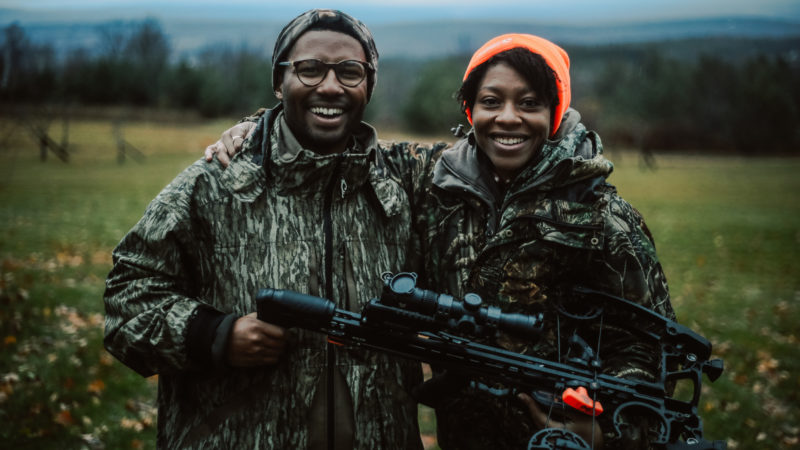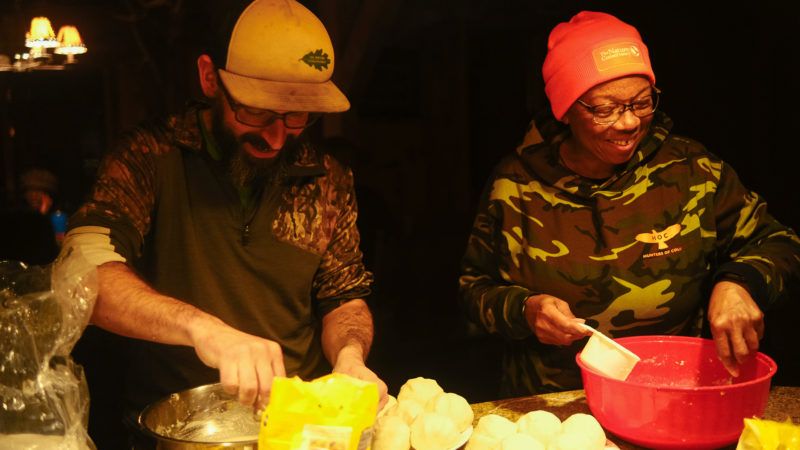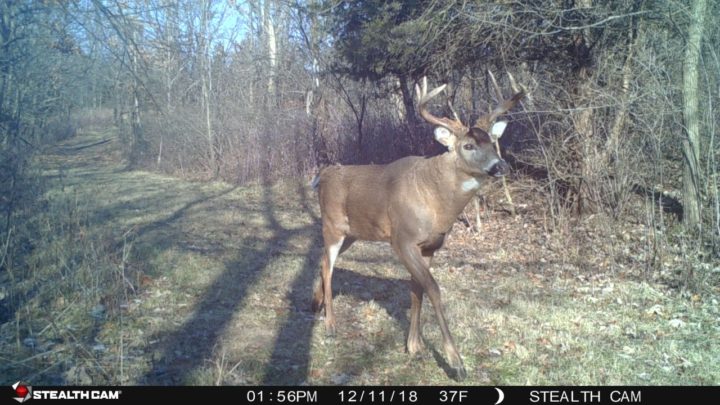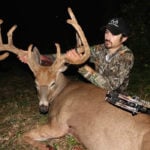According to the U.S. Fish and Wildlife Service, only 8% of adults hunt in the United States. Of those, about 25% are ages 55 to 64. In the past decade, hunter numbers have declined by almost 400,000 each year. And regardless of the metric you use, almost all hunters are Caucasian. Very few minorities hunt. Even fewer bowhunt.
Unfortunately, only a small percentage of African American, Asian, and Hispanic people take to the woods in search of wild game. When analyzing most metrics, whites comprise about 95% of hunter participation, followed by Hispanics (3%), African Americans (1%), and Asians (1%). And most of the Asians, African Americans, and Hispanics who do hunt live in southern states.

Today’s hunting landscape is changing. Reduced land access. Increased investments. Shifts in consumer habits. Expressing more selectivity. Increases in technological usage. More access to better information. Navigating the political science of wildlife management. These things aren’t all necessarily keeping minorities out of the woods, but some of them are.
“For many, deer hunting was a hobby,” said Nick Pinizzotto, CEO of the National Deer Association (NDA). “There was usually a place to go, and nobody cared how big or old your buck was. Now, land is harder to find due to leases and those buying up large tracts that only a few hunters go on. There’s also pressure to not shoot deer that are too young or don’t have high-scoring racks.”
Big Reasons Minorities Shy from Hunting
There are many reasons why minorities don’t hunt. There are no shortage of entry barriers. As people who should work to recruit them, it’s important to understand what we’re going up against. Some of the reasons include:
- They have false perceptions of the hunting lifestyle.
- They have a dislike for hunting weapons.
- They have no one to take them outdoors.
- They have nowhere to go hunting.
- They have long drives to public lands.
- They live in urban lifestyles.
- They have cultural differences.
- They see a hunting population heavily dominated by Caucasians
“Access, or lack thereof, is often cited as the No. 1 reason,” said Bee Frederick with the Congressional Sportsmen’s Foundation. “Access to private land is much harder to come by these days than it was 50 years ago. This is a significant policy issue, especially east of the Mississippi River where there is less public land hunting. There are several state-specific access programs designed to provide public access to private lands.
“There is a significant R3 effort (recruitment, retention, and reactivation) from state agencies and NGOs around the country to help reverse this trend,” Frederick continued. “Many state legislatures and state agencies are also taking strong measures to reduce various impediments to recruiting or retaining new hunters (lessening minimum age restrictions, increasing length of hunter apprentice licenses, increasing Sunday hunting opportunities, etc.).
Additionally, there is a growing movement focused on providing healthy and organic food through the Locavore movement.”

Things We Can Do Differently
“As hunters, we should be careful when talking to nonhunters about the finer points of hunting,” said Kip Adams, chief conservation officer for the National Deer Alliance (NDA).
“Be smart about what you share,” concurred Nick Pinizzotto, CEO of the NDA. “Don’t be afraid to ask, ‘Do you mind if I share a hunting photo or story with you?’”
On the bright side, there are things we can do to help recruit minorities. Organizations with the power to do large scale operations should:
- Hire minority hunters to recruit other minority hunters. They’ll relate more.
- Create hunter recruitment programs that communicates in ways minorities are used to.
- Hold events specifically for minorities.
- Take strides to ensure word of hunting opportunities reach minority groups.
- Use school-based archery programs to reach a younger demographic.
- Spotlight minority groups in outdoors media.
- Host wild game dinners in minority-dominated areas.
- Offer significant hunting license and tag discounts to new minority hunters.
“Focusing on the kill as the main point of the hunt is a sure way to have a potential hunter become sour on the idea,” said the National Wild Turkey Federation’s (NWTF’s) Pete Muller.
“A former co-worker of mine was converted into a hunter simply because he heard the countless stories my hunting buddies and I told of backcountry hikes, early mornings hunting geese, even just talking about our trips to the archery and gun ranges. But another avenue is through food. I have enticed people to join me for a hunt simply by feeding them meals prepared with wild game I harvested.”
These things considered, there isn’t a magical solution. It’s going to take hard work, creative strategies, and maybe even strokes of good fortune to bring in new waves of minority hunters. That said, you aren’t alone. You can lean on the assistance of others.

Organizations to Work Through
There are numerous conservation organizations with a focus on creating hunters. NWTF focuses heavily on hunter recruitment and retention. While you can go through local and state chapters, they also have excellent facilities at their headquarters in Edgefield, South Carolina.
“The Palmetto Shooting Complex is an outlet to reach those who are shooting enthusiasts but who may not hunt,” said Travis Sumner, NWTF’s Hunting Heritage Center and habitat manager. “Our Winchester Museum is also used as an outlet. Through our tours there, we are able to reach those who are interested in hunting.”
The National Deer Association also helps recruit and retain hunters. “We operate as a hunting camp for first-time adult hunters through our Field to Fork program,” Forester says. “We have private landowners exploring similar models, and we’ve found success connecting NDA branches with unleased timberlands for new hunter outreach.”
Large programs aside, if you see an opportunity to recruit minority hunters, simply reach out to conservation organizations near you. Ask them if they can help you.
Be a Great Hunting Buddy
Once you have someone to take, it’s important to be a great hunting buddy to them. These are several ways to do that:
- Show respect to them. Spend time during hunting season, and outside of it, too.
- Be fair and positive. Treat everyone the same. Everyone gets the same opportunities.
- Share your experience and time. These are more valuable than anything.
- Follow hunting regulations. This isn’t up for debate.
- Follow camp rules. These help everyone stay on the same page.
- Keep everyone informed. No one likes surprises, especially bad ones.
- Share the load. This means financially and regarding labor.
- Don’t always be the expert. Let the new hunters have their day in the sun, too.
- Always put safety first. Never do anything to put someone else, or yourself, in danger.
In closing, it’s important to remember your job isn’t done because you took someone on one successful outing. Even if they filled a tag, there’s more work to do.
“Inviting new people is a big part of what it means to be a hunter,” said Eric Dinger, Powderhook Co-Founder. “As far as I’m concerned, the best stories are the ones where an experienced hunter gets to experience a hunt through the eyes of someone new. But, for most people, it’s not enough just to invite them once. Until someone can go hunting on their own — with the gear and access they need — your job isn’t done.”

 By
By 



